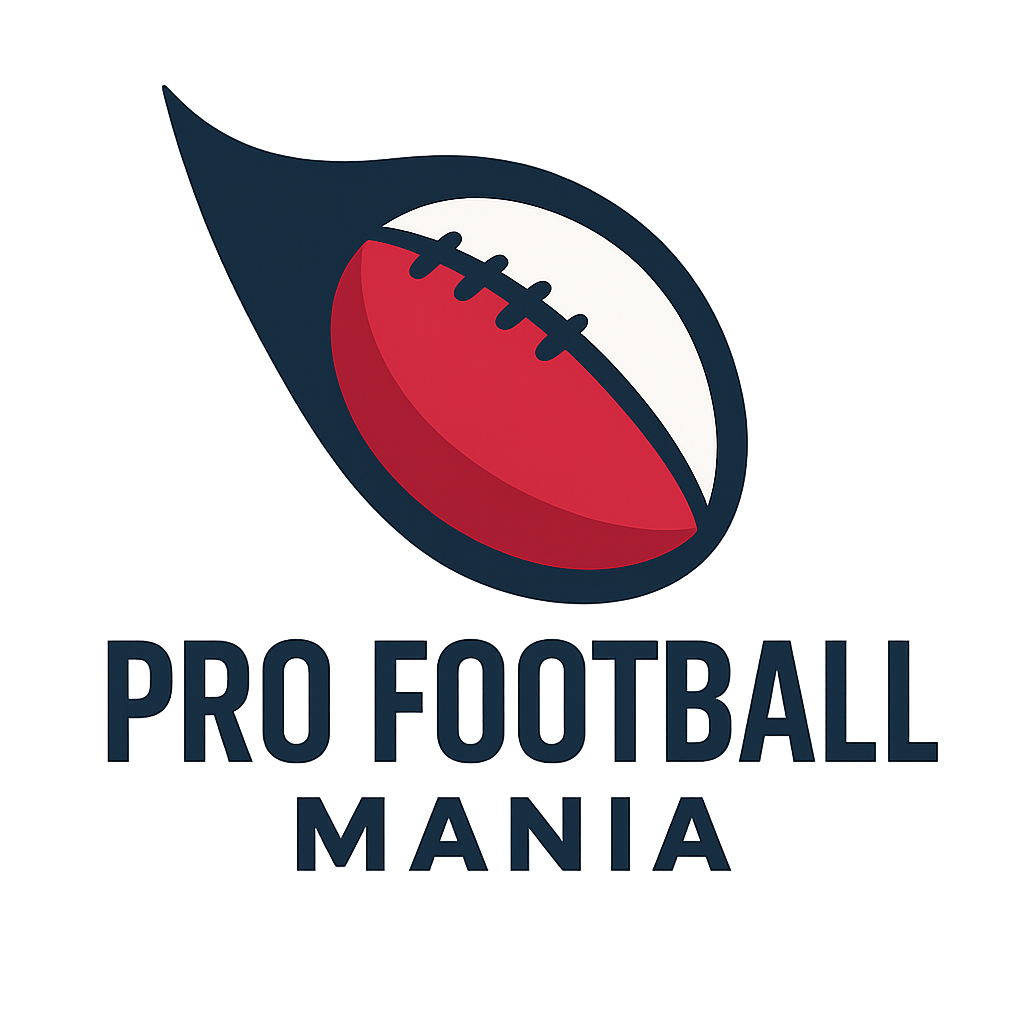Buddy Ryan and the 1985 Bears defense inspired and dominated
By: Jake Rajala
The mythical figure and defensive genius Buddy Ryan simply revolutionized the game of football. Ryan created the notorious 46 defense and he’s the architect behind imposing the 1985 Chicago Bears defense. Mike Singletary, who was the middle linebacker and leader of the defense once nicely reflected on the theme of the ”˜85 Bears defense in the following statement. Singletary stated, “the 46 defense, to make it very plain and to the point, it’s all about pressure. It is all about pressure!”.
It was well noted that the Bears defense was vicious and an opposing QB’s worst nightmare. The ”˜85 defense truly hasn’t seen a defense match the same aggression and success to this day. And it appears that the blood boiling, cigar-smoking, guru Buddy Ryan is starting to steadily gain more praise and recognition after his passing in 2016.
It’s clearly known that Ryan was the trigger-happy defensive coordinator for the Bears, but it’s not quite known what personal journey the infamous character has been on. In this outlook, I’m going to take you through the wild west journey of the greek god-like figure Buddy Ryan.
Ryan had goals of playing college football after his high school years. But, he first served in a very combative war overseas before ever stepping onto a college campus. He was actually a teenager (17) when he enrolled in the national guard and was called to serve in the war. He arrived in Korea on Christmas Day. Ryan recalled that his attitude wasn’t great, but he decided he had to be the best soldier that he could be. He was quickly promoted to Master sergeant in his time. According to the Baltimore Sun, Ryan said he saw his buddies die by his side and he even saved one from a “rice paddy” after he was shot in the shoulder.
Ryan had quite the resilient and badass upbringing if you ask me. Ryan clearly incorporated his teachings from the military into his no BS approach with football coaching.
Ryan wouldn’t be the only Super Bowl-winning coach to play college football and play even college football as an offensive lineman. The New England Patriots six-time Super Bowl champion, Bill Belichick played center and tight end at Wesleyan University. Yes, you read that correctly. Belichick would suffer a gruesome injury in a practice drill that isn’t used today. The former Wesleyan student would then play lacrosse after his short-lived football career. The talented and creative Los Angeles Rams head coach Sean McVay played wide receiver for Miami University, where he caught 39 passes and recorded 312 yards.
The list of former NFL coaches to serve in the military is quite fascinating, as well. George Halas served in World War 1 and World War 2. After Halas served in WW1, he won a Rose Bowl MVP as a player at the University of Illinois. His tale even gets more surreal, as he played for the New York Yankees later that summer. Don Shula and Tom Landry (both Top 5 NFL coaches in history) also served in wars. Shula was fighting in the Korean War, while Landry served in WW2. The toughness and culture from their military days clearly wore off on them in them in astonishing ways.
After Ryan finished his collegiate playing career, he had his eye on coaching football. He, just like his disciple Gregg Williams, started his coaching career in high school. He spent four years coaching in HS (two as an assistant/two as the head coach). The motivated Ryan started coaching the defensive line in the collegiate ranks and he wouldn’t look back, as he coached a terrific DL for Univ. of Buffalo (61-65), Pacific (66), and Vanderbilt (67). He was a part of fearless and terrorizing defenses, particularly at Buffalo. This helped me get special attention for a coaching shot at the NFL level.
The Ryan sage acquired an NFL coaching job in the Big Apple in 1968, which would be the same city that his son Rex would later pick up a head coaching job. It would of course be Gregg William’s last stay as a DC, as well. Ryan would prove to be no slouch or pencil holding assistant in his time in New York. He showed the same sense of urgency that he previously showed in the military, as he instilled pivotal new blitzes into the defense, and he ultimately played a big role in helping the Jets win Super Bowl three by a score of 16-7. There have only been seven Super Bowl contests in NFL history where a team scored below 7 points.
Ryan would continue to grow his arsenal of aggressive, creative tactics in his time as an NFL assistant. In 1976, he joined the Minnesota Vikings as the defensive line coach. You guessed it. Ryan was the ring leader and DL coach behind the “Purple People Eaters”. Jim Marshall, Carl Eller, Alan Page, and Gary Larsen were the bloog hungry Vikings defensive legends.
It’s worth noting that Ryan wasn’t responsible for the berth or success of the behemoth Vikings defensive lineman, though. In 1969, the four “Mount Rushmore” DL all earned an All-Pro nod. Clearly, he wasn’t calling the shots when the Eaters were at the top of their game. The All-Pro honors awarded to the four Viking defensive lineman was the only time four DL from the same team made All-Pro in the same year.
The former Jets assistant would still utilize the super villain defensive lineman to his utmost advantage. Ryan was a key figure for the Vikings in a Super Bowl trip in 1977. This would also mark his second Super Bowl appearance as a coach. Ryan’s NFC champion squad would get pummeled by Al Davis’s Oakland Raider squad by a score of 32-14. Ken Stabler’s offense truly blew off fireworks against what was left of the Purple Eaters.
In 1978, Ryan’s legacy and ego took an incredible leap as he started his days as the Chicago Bear’s defensive coordinator. The owner George Halas gave Ryan his first opportunity to command a defense. So, what did Ryan do? The rising NFL figure blended his different trains of thoughts together and unleashed the 46 defense.
This is how the 46 defense is simply laid out. There’s four DL: one DE on the outside shade of the tackle, both DT on the outside shade of the guard and then the best DL over the center. The three LBs are together on the strong side (aka the TE side). The most gifted pass rusher will play on the outside shade of the TE, while the other OLB plays head up on the TE. The MLB (mike linebacker) plays five yards off the ball in between the nearest OLB and the nearest DT. Then the strong safety essentially lines up as the weakside ILB. His role is very, very important because he needs to play the run, cover the pass, and pressure the QB. The SS was so important to Buddy Ryan in 1978 that Ryan named the defense 46, which was named after SS Doug Plank, who held the number 46.
As stated early on in the piece, the goal of the 46 defense was to pressure the offense and HIT THE QB. The Bears defenders in the front 7 saw the scheme as mismatch heaven. They had an abundance of sack opportunities and it was truly “meet at the QB” every other play for the ferocious Bears defense (half-serious).
The Bears surrendered a mere 198 points in 1985, which was actually improved in 1986 where the D gave up 187 points (NFL record). Still, the 1985 defense had just a bit more bite and prominence at the highest level. Here is an example of how unearthly talented the Bears defense was in the 1986 playoffs:
Divisional round: New York Giants scored 0 points
Championship round: Los Angeles Rams scored 0 points
Super Bowl: New England Patriots scored 10 points
The Bears defense simply played better than any prior NFL defense or future NFL defense in postseason history in the surreal 1986 playoffs. Ryan’s innovative defense and “win at all costs” philosophy helped the Bears win their first Super Bowl. The victory would lead to head coach Mike Ditka and Buddy Ryan getting carried off the field. It was the only moment a head coach and defensive coordinator would be carried off the field by players.
In the following offseason, Ryan was introduced as the next head coach of the Philadelphia Eagles. Ryan finally struck gold as a head coach at the highest level of competition. It was a long journey for the macho coach that was an army sergeant, high school assistant coach, high school head coach, assistant college coach, NFL assistant, NFL defensive coordinator, and finally NFL head coach.
Ryan brought his swagger and team disciple to the “city of brotherly love”. The Eagles team was in rebuild mode for the first two seasons, as the Eagles went 5-10-1 in year one and 7-8 in year two. Fortunately, the Eagles management was patient with Ryan and the HC was able to stick around after two non-winning seasons in the feisty city. The patience paid off with Ryan, as the team reached the playoffs in 1988, 1989, and 1990. In 1989, Ryan also faced a lot of heat for placing a $500 bounty on Troy Aikman and a $200 bounty on the Cowboys kicker in a classic NFC East showdown.
Ryan was controversially fired after a 10-6 season in 1990 because the team lost their third playoff game straight. The Eagles former owner Norman Braman stated “We hope we’ve made the moves today that will get us, hopefully to the promised land”. The Eagles would then not go onto win a Super Bowl until the 2017-2018 season with backup QB Nick Foles.
The former Eagles HC would join the Houston Oilers as the defensive coordinator in 1993 and stay there for a season. His path would crossover with Gregg Williams, who joined the team as the special teams coordinator. Ryan also made a lot of noise in the season for striking his head coach, Kevin Gilbride, during a game. After a mere season, Ryan fled the Oilers to pick up his second head coaching gig. He also unsuccessfully tried to franchise tag Williams to come with him, which was possible between coaches at that time. The old school Ryan would then have a second crack at a head coaching gig with the Arizona Cardinals. It was a very challenging project for Ryan, as the team went 32-64 in their previous six seasons. Ryan did unfortunately and unsurprisingly to many, flame out of the Cardinals gig after record of 12-20 in two seasons.
1995 would then be Ryan’s last presence in the NFL. Geoffery Chaucer, who was arguably the greatest English poet of the Middle Ages, once said “all good things must come to an end”. This quote held true to even Buddy Ryan’s existence in the professional football league.
Buddy Ryan was no longer a face in the NFL, but that didn’t stop the Ryan name from leaving its mark on the national football league. Buddy Ryan had two twin sons named Rex and Rob, who would both literally follow in his footsteps. Rex was notably the defensive line coach for the 2000 Baltimore Ravens squad that demolished the New England Patriots 34-7 in Super Bowl XXXV. Rex, who is five minutes older than Rob, ascended into the defensive coordinator chair for the Ravens in 2005-2008 and he would then finally earn himself a head coaching opportunity in 2009. Rex was introduced as the New York Jets head coach in 2009 and he would remain there until 2014. When it seemed like Ryan was washed up, he picked up his second head coaching gig in 2015 with another AFC East squad in the Buffalo Bills. Ryan wouldn’t reach a Super Bowl, but he did gather two AFC championship appearances in back to back seasons with the Jets (2009 season, 2010 season).
The majestic white hair Rob Ryan would also find defensive success in the NFL. Rob wouldn’t climb to the NFL head coaching ranks, but was a long-standing DC in the league. Although, Ryan struggled to find prominent success in the 12 years he held as a DC. He only coached one defense that was Top 13 in points allowed, while coaching seven defenses that were ranked 24th or lower in pts allowed. Ryan did find superb success as the Saints DC in 2013, where his unit ranked fourth in YPG allowed and PPG allowed. Unfortunately, the Saints high end success on defense didn’t stick and Ryan was kicked out of the Big Easy after the Saints defense finished 32nd in PPG allowed in 2015. Currently, Rex Ryan is an ESPN analyst, while Rob Ryan is the ILB coach for the Baltimore Ravens.
On June 28th, 2016, heartbreaking news swarmed the Ryan family and the football world. The football wizard, Buddy Ryan, passed away at the age of 85. He died peacefully at his ranch in Shelbyville, Kentucky. The following day, Former Bears DT told ESPN “I wonder who just lost their defensive coordinating job in heaven”.
Shortly after the iconic football mind passed away, Gregg Williams sat down with NFL Network to talk about the impact Ryan played on his life as a football coach and a person. Williams told NFL Network on how he combined a few different defensive schemes from the likes of Buddy Carson, Dick Labeau, and Buddy Ryan. He cemented the fact that took more out of Buddy Ryan’s playbook than any other special defensive mind. Furthermore, Williams expressed the magic that he really captured from coaching under him in the Houston Oiler days. He stated “there’s the Buddy Ryan coaching in how you get players to do more than they’ve ever done before”. Williams proudly stated that Ryan would give him a call on every memorial day and he would heckle him to use his favorite calls more.
Ryan left a rare impact on his players, assistant coaches, family, and millions of NFL fans throughout the 1980s and 1990s. There hasn’t been a defense that’s matched the same spirit as 1985 Bears defense and there hasn’t been another defensive coordinator to be carried off the field in a Super Bowl victory.




















